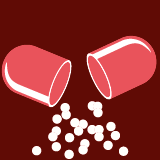|
Autores/as
Gulías, Òscar ; McKenzie, Giselle ; McKenzie, Giselle ; Bayó, Miquel; Agut, Montserrat ; Bayó, Miquel; Agut, Montserrat ; Nonell, Santi ; Nonell, Santi
|
Abstract
The emergence of multidrug-resistant bacteria is a growing problem and alternative therapies are being sought to effectively address this issue. The aim of this study is to assess a range of Escherichia coli strains’ susceptibility to Methylene Blue-mediated antimicrobial photodynamic therapy and determine if this is affected by their antibiotic-resistance profile. Two reference and twenty-four uropathogenic clinical E. coli strains were used in this study. All were tested in vitro for antimicrobial susceptibility against sixteen antibiotics. Strains underwent photodynamic treatments using the photosensitizer Methylene Blue with red light and tested in both planktonic and biofilm state. It was found that reference strain ATCC 25922 was susceptible to all tested antibiotics whereas reference strain ATCC 35218 showed resistance only to Ampicillin. With the exception of strains number 16 and 22, all of the isolated strains were multidrug-resistant according to the criteria established by the European Centre for Disease Prevention and Control and the Centre for Disease Control and Prevention, where acquired non-susceptibility to at least one agent in three or more antimicrobial categories is outlined. Photodynamic therapy induced more than 3 log10 colony-forming units’ reduction to all strains in planktonic state. Whereas when tested in biofilm state, two and a half times the original dose of methylene blue was necessary to cause a 3 log10 antimicrobial effect. There were statistically significant differences in susceptibility among the strains tested in both the planktonic and biofilm experiments. Nevertheless, antimicrobial photodynamic therapy could inactivate all multidrug-resistant strains in the planktonic and biofilm state.
|

WoS
Scopus
Altmetrics
  
|
